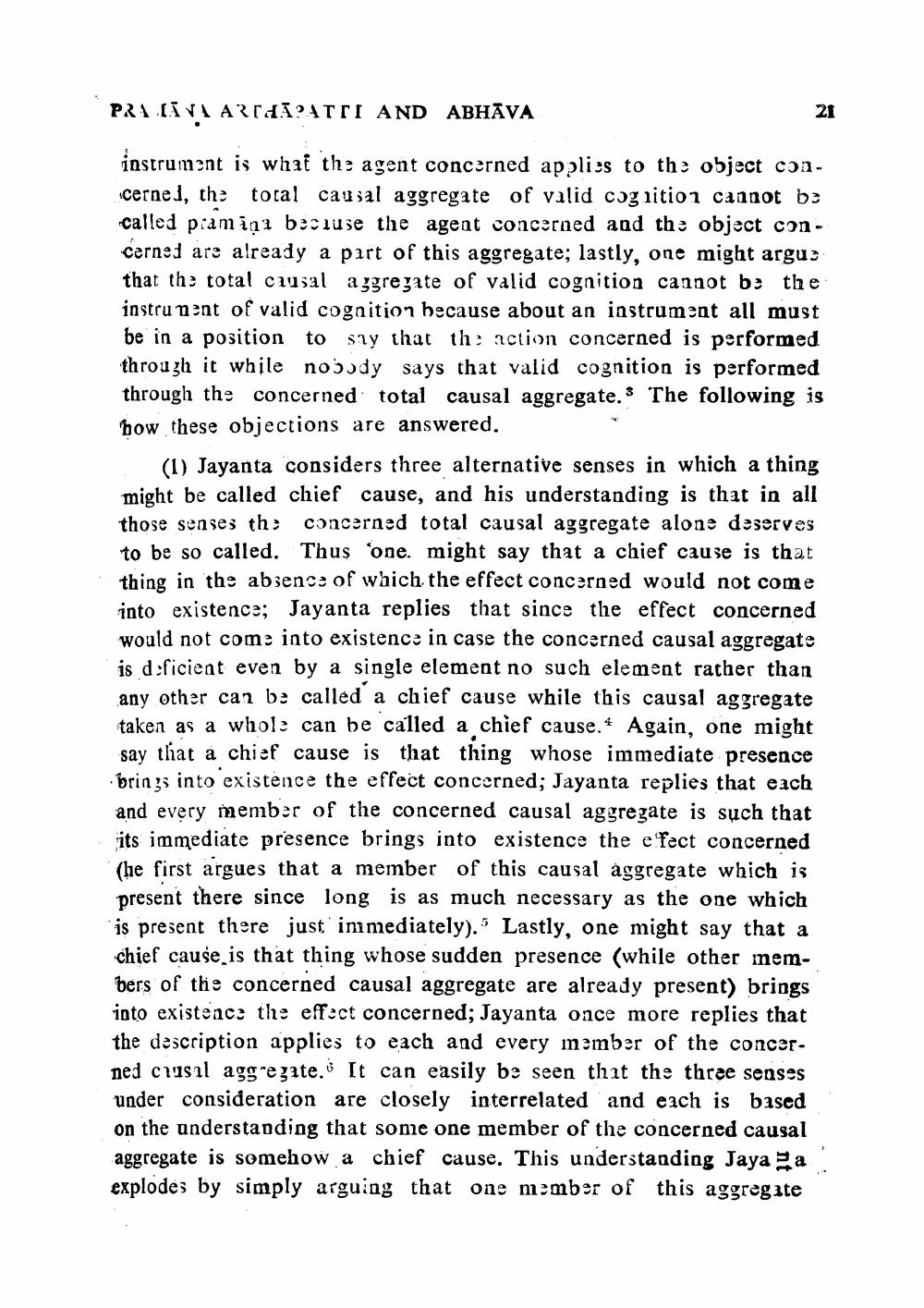________________
PRATĪVAARTJĀ?ATTI AND ABHĀVA
21
instrument is what the agent concerned applies to the object concerned, the total causal aggregate of valid cognition cannot be called piam ini beciuse the agent concerned and the object concerned are already a part of this aggregate; lastly, one might argus that the total causal aggregate of valid cognition cannot be the instrument of valid cognition because about an instrument all must be in a position to say that the action concerned is performed through it while nobody says that valid cognition is performed through the concerned total causal aggregate. The following is how these objections are answered.
(1) Jayanta considers three alternative senses in which a thing might be called chief cause, and his understanding is that in all those senses th: concerned total causal aggregate alone deserves to be so called. Thus one. might say that a chief cause is that thing in the absence of which the effect concerned would not come into existence; Jayanta replies that since the effect concerned would not come into existence in case the concerned causal aggregate is d:ficient even by a single element no such element rather than any other can be called a chief cause while this causal aggregate taken as a whole can be called a chief cause. 4 Again, one might say that a chief cause is that thing whose immediate presence brings into existence the effect concerned; Jayanta replies that each and every member of the concerned causal aggregate is such that its immediate presence brings into existence the efect concerned (lie first argues that a member of this causal aggregate which is present there since long is as much necessary as the one which is present there just immediately).” Lastly, one might say that a chief cause is that thing whose sudden presence (while other members of the concerned causal aggregate are already present) brings into existence the effect concerned, Jayanta once more replies that the description applies to each and every member of the concer ned crasil aggregate. It can easily be seen that the three senses under consideration are closely interrelated and each is based on the understanding that some one member of the concerned causal aggregate is somehow a chief cause. This understanding Jaya Ea explodes by simply arguing that one member of this aggregate




